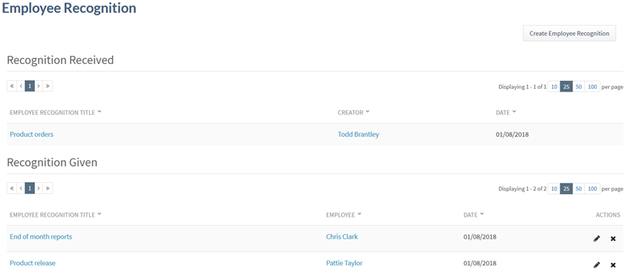
Happy Holidays!
Happy Holidays from our team to you!

Happy Holidays from our team to you!

A multitude of research points to the fact that the majority of firms don’t have a viable succession planning strategy. This is really problematic when combined with some of the other trends we’re seeing. Baby boomers are continuing to leave the workforce, employee engagement continues to challenge most organizations and retention rates are falling. If you aren’t doing succession planning, how are you coping with the changing face of your workforce as older workers transition to retirement? How are you addressing the high turnover rates becoming increasingly common across so many industries?
The churn caused by leadership turnover is only one part of the issue. You need to be prepared for all types of turnover in order to keep your projects running smoothly. Have you ever lost a really key employee in the middle of a project? You probably have at some point, and if that’s the case then you know how disruptive it can be. Over-burdened and over-utilized team members will feel the strain, and if you don’t have succession plans in place, you could be adding to an already difficult situation.
So, why are we losing these key employees and what can be done to keep them? Well, although there could be a number of contributing factors, one of the most common reasons associated with the departure of top performers is a lack of career development.
What is Succession Planning?
Succession planning helps you identify and develop employees with the potential to fill key business and leadership positions within the company. Succession planning increases the availability of experienced and capable employees that are prepared to assume these roles as they become available. From recruiting the right candidate to developing new leadership from within, succession planning is crucial for an organization to meet its strategic vision and goals.
Sin #1 – You Set It and Forget It
This sin quickly results in outdated plans and inappropriate strategies. People may still leave the company, availability of employees on the plan may change, and employees may gain new skills or experience. The company could undergo major change, like a merger or acquisition. There is a fluidity to business strategy that should be reflected in your people planning.
Plans should be reviewed at least yearly and whenever changes in company direction or goals are made. When you review plans, ensure the potential successors are still viable by taking a look at your top performers, reviewing employment records, and watching out for new talent that might be a good fit.
Sin #2 – You Have No Backup Plan
The second sin happens when your plans are too narrow. If your plans only include one person and that person leaves, this can put you in a difficult position. Neglecting to create a backup plan restricts your ability to adjust to workforce changes.
When you review your plans, check for backup successors, and if none exist, identify some. Re-evaluate the backup employees as you complete your regular reviews of succession plans.
Sin #3 – You Fail To Develop Successors
Once a plan is setup, it’s time to provide development opportunities to your successors. Get them ready to be successful in the potential new roll. Failing to tie your succession planning to development strategy has plenty of consequences. What happens when an employee is promoted to a leadership role that they aren’t prepared for? A weak leader can have a very negative impact on team culture. Weak leadership can also erode workforce confidence. And for the potential successors, being moved into a role they are unprepared for is an extremely negative experience.
Analyze an employee’s skills, competencies and experiences, and look for resources, such as training courses or mentoring programs, to support those needs. Review the employee’s career path and consider lateral moves that could aid in your planning.
Sin #4 – No Manager Involvement
Managers know their employees and interact with them on a regular basis, and by leaving them out you are overlooking a good source for information.
Effective succession planning includes managers. Give them a voice and take their feedback into consideration. This tactic not only broadens your search, but fosters engagement. Both managers and team members feel they have a voice and are represented in the company’s planning. It also helps managers at the team level by keeping them in touch with who is being considered for succession.
Sin #5 – You Fail to Consider Your Entire Workforce
If you only look at your identified high potential employees, you may miss hidden talent because in many cases they are typically evaluated on the basis of ‘fit’ for their current position without broadening the discussion to include other roles in the organization. Larger organizations in particular may have “unknown” employees who should be considered – the greater the number of employees, the harder it becomes to ensure you are considering all of the right people.
So, make sure you look across the company’s entire workforce. Be sure to consider all important criteria, not just current skills, competencies and history. Look at employee goals and manager recommendations. Do any employees have a career path in place that is already providing training opportunities ideal for the succession plan? Enlist help to discover talent throughout organization – again, give your managers and other key company employees a voice.
Sin # 6 – You Fail to Consider the Employee’s Needs
This sin can lead to engagement and retention issues, in addition to poor job satisfaction. It’s all about communication. You can’t create, implement, and maintain a succession plan in a vacuum. Your ideal candidate to become the next CEO may have very different priorities in mind for life and/or career.
Listen to what your employees say they want. This encourages engagement, positively impacts attrition rates, improves job satisfaction, contributes to overall business success, and demonstrates support for employees’ goals & aspirations.
Sin #7 – You Keep Employees in the Dark
If employees are not aware that there are opportunities available for them within the organization, they may look outside the company. This can lead to lack of engagement, which affects the bottom line. It may not always make sense to provide the full picture to a potential successor, but it is in your best interest to involve them to the degree that you deem appropriate.
There is a lot of debate on how involved employees should be in succession planning, but ultimately, not involving them can have negative consequences. By telling employees they are on a plan, you show that you are considering their long-term involvement at the company and driving awareness that can motivate self-development. You can never go wrong with more communication.

As a part of our underused Talent Management features series, we wanted to highlight some of the different ways you can recognize the accomplishments of your employees. In this post, we will walk through three underused Talent Management features: Employee Recognition, 360 Reviews, and Project Appraisals. Each of these features makes it easy for you to recognize your employees and for your employees to recognize each other.
We often talk about the modern workforce in our posts, but I think the desire for recognition is pretty universal. Your employees want to feel like they are contributing to your business and they want to know that they are having a positive impact on their colleagues. It can be difficult to find the time to create these types of programs and that’s why we’ve built features into Talent Management to help you create a positive culture of recognition and collaboration. If you’d like to learn more or see these features in action, check out our recent demo called “Give Employees What They Crave: Recognition.”
Within Deltek Talent Performance, employees can submit recognition for other employees in the organization. The employee giving recognition can provide information by selecting “create new employee recognition” and inputting information for one or more employees. They can include specifics about the situation and the skills and competencies that the employee or team demonstrated.
Once employee recognition has been given, the employee who gave this recognition can see the feedback they’ve given and received, and can drill down to view the details of each entry. This screen lists recognition created by the logged in user, as well as recognition submitted by other employees to recognize the currently logged in user.

Employees can view the feedback they have given and received
When the entry is submitted, an email notification is sent to the employee being recognized, his or her manager, and the user who submitted the entry. Additionally, both the manager and employee can access recognition as a part of the employee’s performance review.

Include Employee Recognition entries in performance discussions
Another way to collect information is through the use of 360 appraisals. These reviews expand the performance process from managers/team leads and employees to others who have information about the employee’s performance (both inside and outside of the organization). Managers can easily launch a 360 using a workflow template and choose who the feedback will be requested from.

360 Reviews are easy and intuitive to launch and use
If you enable the option, employees can also recommended others they would like to participate. It is also possible to keep the participants anonymous in the employee’s view. Once all participants are confirmed, the manager can review and advance the 360 to the next phase. At this point, participants in the 360 receive an email notification with a link to the solution to complete their task. They are able to review the items included in the form, as well as provide comments where applicable.
As participants complete the review, managers can view who has/hasn’t completed their tasks. They can drill-down into each completed review to see individual responses. They also have a summary view available to them to see results side-by-side.

All completed 360s are stored within the employee’s past appraisals section
Additionally, a project team lead can launch project 360s for members of the project team. External participants (such as the client they worked with) can also be included to obtain feedback on project delivery. Reports on 360s are also available, making it easy to see what feedback is being captured.
What can you do to make sure that the feedback you’re providing your employees is both timely and relevant? One answer may be at your fingertips. There are many different ways to manage employee performance, ranging from annual performance reviews to continuous feedback sessions. Deltek’s strong focus on projects means we also provide project-based appraisals for your project team members. This makes it easy to involve project managers in the review process and solicit feedback on employee performance at the end of projects they are engaged in.
Within Talent Development, project teams can be added and team members and a team lead established.

As a part of the project team, performance reviews can be launched for team members by the team lead.
Project reviews can include goals, competencies, achievements, and other components. These components are then available for review and scoring by the team lead. This means your employees are getting relevant and timely feedback that can be immediately applied to their next project. You will create a culture of performance and recognition while helping your employees to develop and advance more quickly.
If you are looking for ways to drive employee engagement and improve performance across your project teams, then you’ve found a great place to get started with these features.
The three features discussed here are easy to use and easy to implement. Make sure to subscribe to hear more about ways you could be leveraging your Talent Management solution more fully.